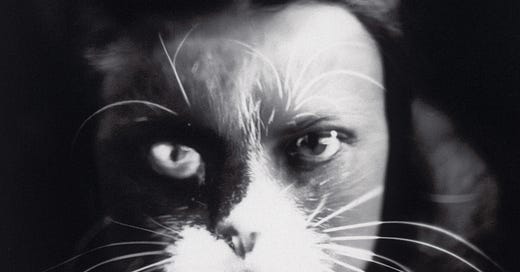Crack your laptop as you crack your clavicle from your scapula and sternum. Cats have a free-floating collarbone, so to write more flexibly, you’ll need one, too.
Once you’ve set your sights on a tale, take your time. Spiral into the writing slowly, sensually, dropping deeper into concentric circles of metaphor and meaning as you knead your claws into the meat of the piece.
Sense memory is important, but scent memory is divine. Let your nose guide you. What are the scents of the world you’re conjuring? Open your mouth wide to get a better whiff.
Like a cat’s eye, writing is both a mirror and a window. Reflect the world back to readers as they peer into your luminous depths.
Play with pace, length, and structure to find the shape that suits you best. Languid, linear, and stretched-out long? Coiled tight and cyclical? Or a brief jolt of pouncing, anarchic, joy?
Let play be part of your practice. Treat words as the tiny toys they are. Bat them sweetly, savagely before you go in for the kill. Purr at every small victory.
Take frequent breaks to stop and listen to the birds. Let their songs nourish you as they prick your ears.
Trust the pawcess. Writing may feel like falling to your doom, but know you’ll somehow always land on your feet.
Howl about your work as long and as loud as you like, or write in secret and in silence, so they never see you coming. (And no need to save the cat. They’re perfectly capable of saving themselves.)
ABOUT THE AUTHOR: Kristen J. Sollée is a writer, curator, educator, and witch raconteur exploring the crossroads of myth, history and occulture. She is the author of three books: Witches, Sluts, Feminists; Cat Call; and Witch Hunt. Her newly launched Substack, What The Cat Dragged In, delves into feline arcana for feral times.




